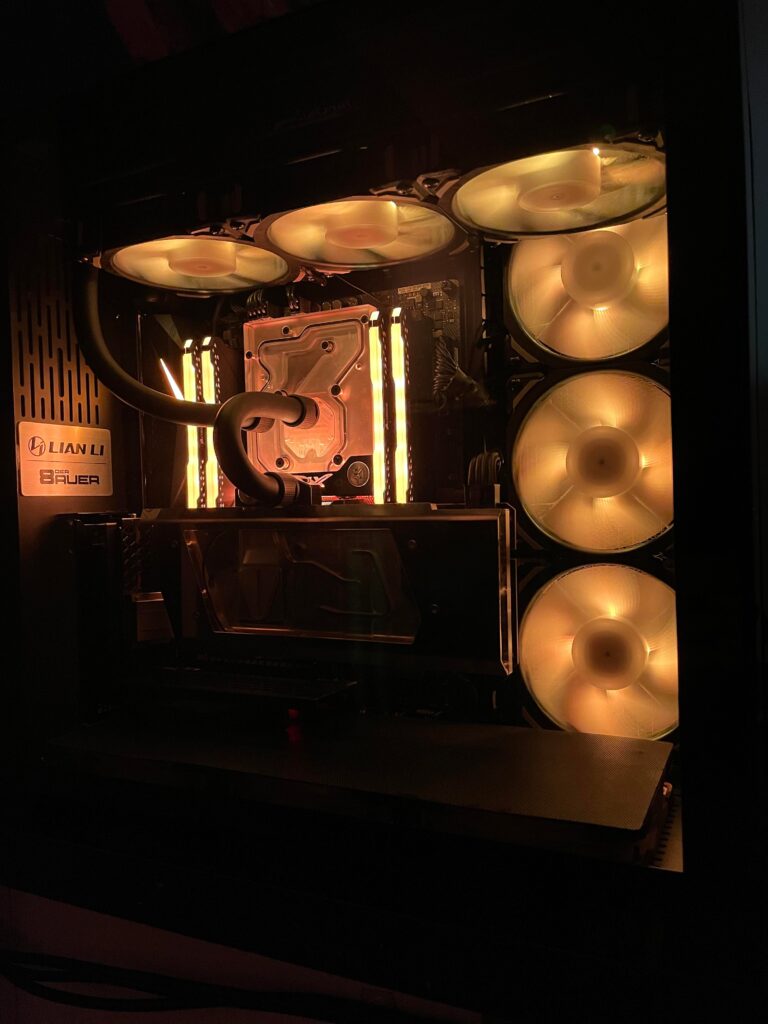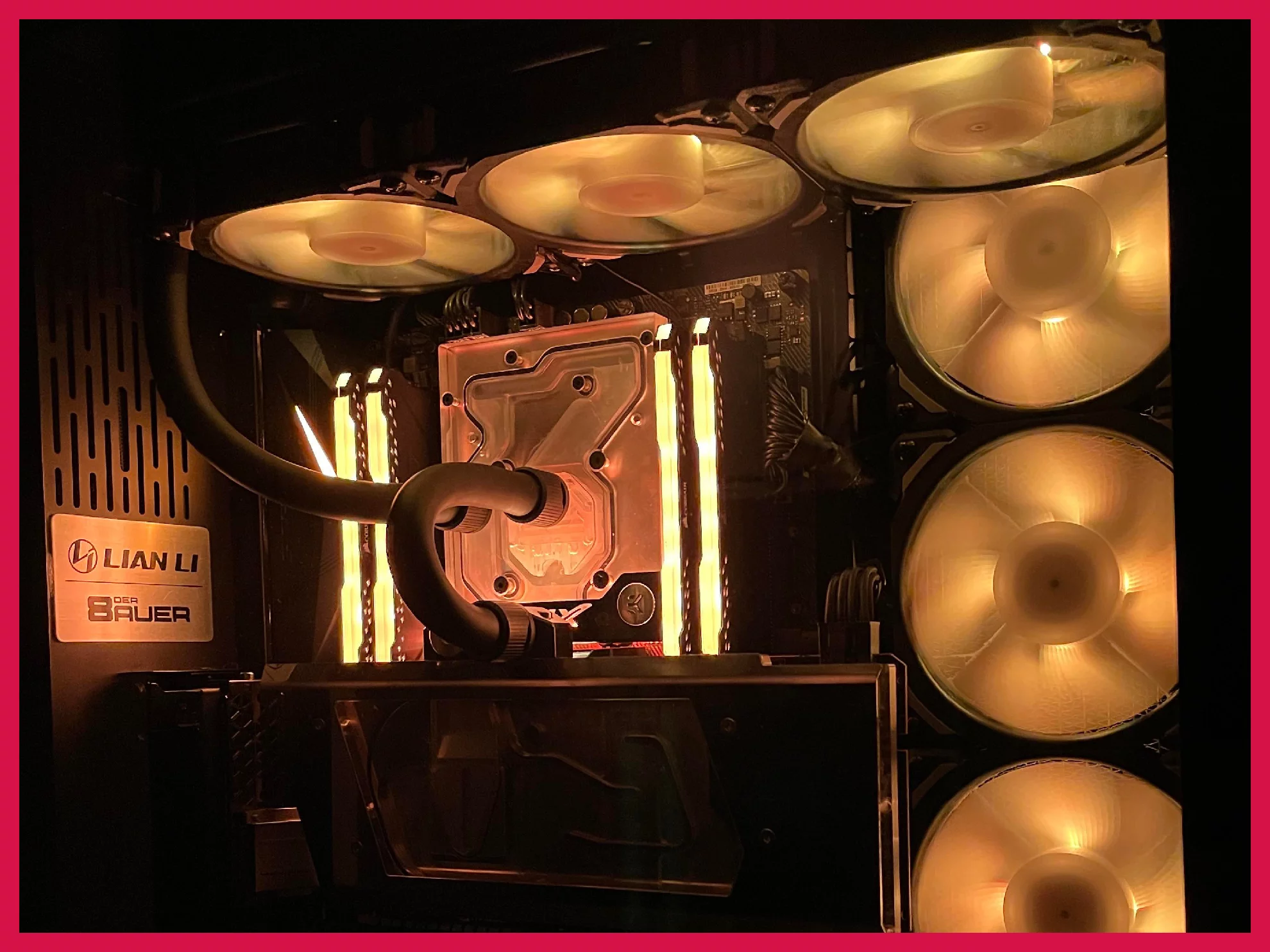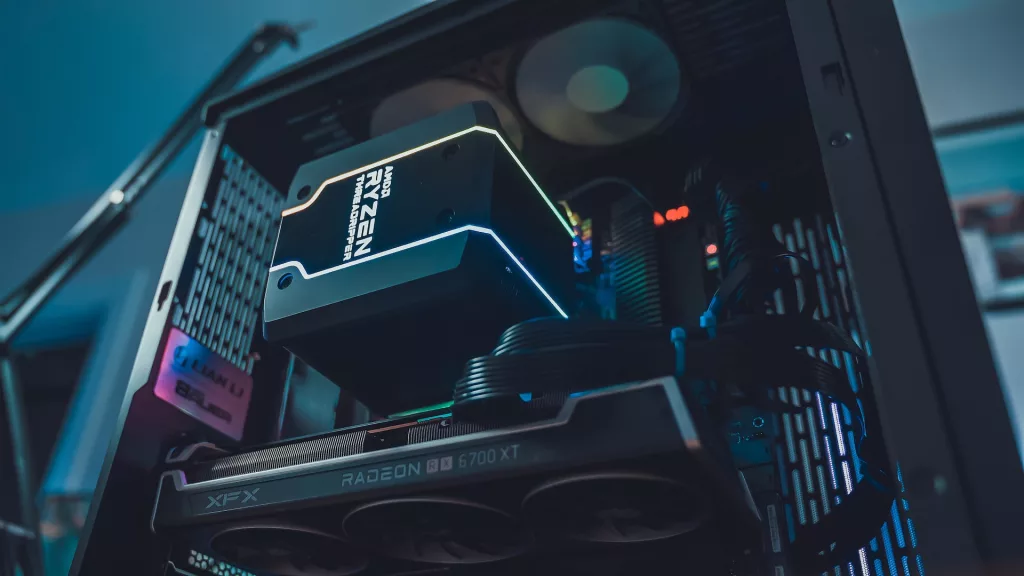Water cooling is better than air cooling in a gaming PC. Air cooling depends on heatsinks and fans. Heatsinks are great, but fans use air to thermally cool a component. Air’s thermal conductivity is much less than that of water. Water cooling, therefore, is more effective and efficient.
A water cooler is simply a water cooling or liquid cooling system. The fight is between installing a water-cooling system within your rig or to depend on air cooling through fans. Sure, fans are great. But when the stakes are high as well as the temperatures, water cooling can be a lifesaver.
This article is a part of a series on water blocks and water cooling in general. Start with an explanation of all terms such as water block, loop, liquid cooling, coolant, etc.: Water cooling dictionary What is a water block – Gamer’s guide Water block price for PC cooling Is a water block worth it? Are water coolers better than fans? Is liquid cooling worth it? What does a CPU water block do? Also read if applicable: Water cooling block for RTX 3080 | Water cooling block for RTX 2080 Ti | Water cooling block for RX 5700 XT | Water cooling block for RX 580
Better thermal conductivity
Water cooling and especially coolant or concentrate-based liquid cooling is much, much more effective in pulling the heat out of the component (processor or video card). It also disposes of the heat pretty quickly through radiators. Cooler water goes into the system in a much better way than cooler air ever can.

As heat dissipation is the single-most important factor when you’re playing high-end games on high FPS, water cooling or liquid cooling wins hands down.
Other benefits of water cooling
Sure, a water-cooling system will cool my components down way better. But what else?
- Colored loops: If you use coolant instead of transparent water then you can buy dyed concentrates. They will make the tubes run colored. With a little bit of inside lighting or similarly-colored lighting, you can have an amazing looking PC. Of course, the case needs to be transparent otherwise your motherboard will die of all the excitement and amazingness only it can witness, in solitude.
- Lesser noise: Unless you have a strong triple-fan radiator, you can expect a water-cooled system to produce much less noise than, say, a 4-fan or 5-fan airflow setup.
- Increased longevity: A water-cooling system is more efficient. Consequently, it’s also highly likely to dispose the heat quicker and more efficiently. This directly translates to a longer hardware life. Heat kills hardware. It’s a slow and painful death. Liquid cooling makes things much better. You can overclock, turn your settings up, and do more on the PC while still staying under safe temperatures.
- Lesser load on the motherboard: A heatsink is heavy. Attached to it is the air cooler or fan (for both, the processor and the GPU). This is additional weight that your motherboard must carry because frankly, gravity isn’t going anywhere. A water-cooling system doesn’t put this much weight on the motherboard, while releasing it from the bondage to the heatsink.
Problems with water or liquid cooling

Not everything about the water block is rainbows and ice creams. Darker powers lurk in the shadows.
- Water cooling is riskier. Fittings need to be watertight, pump should always have power, there should be no leakage in the radiator, the water block better not get clogged (for example, due to the dye used in concentrates/coolants). One mistake and you’re looking at abrupt shutdowns (because no backup fans) or permanent damage to hardware (if water leaks, well, I don’t think I need to tell you what might happen to all the little circuits on your motherboard).
- A water-cooling system is harder to set up by your own. Purchasing an all-in-one kit (although with its own set of problems) vs. a DIY water cooling setup can cut down on the installation time and difficulty.
- All-in-one water-cooling kits are expensive. Much, much more expensive than adding 4 fans to your system. $500 is the average cost of a full-fledged liquid cooling system from Corsair.





